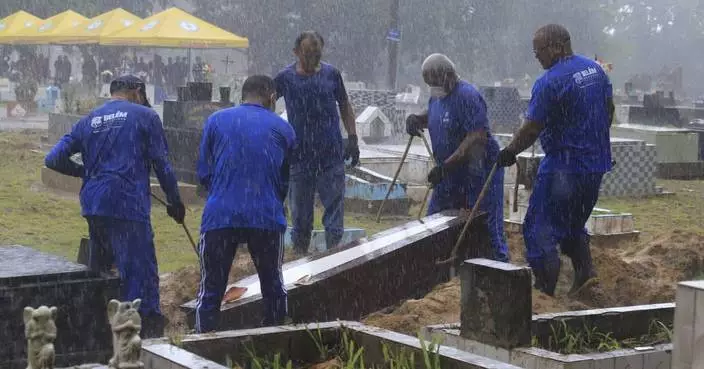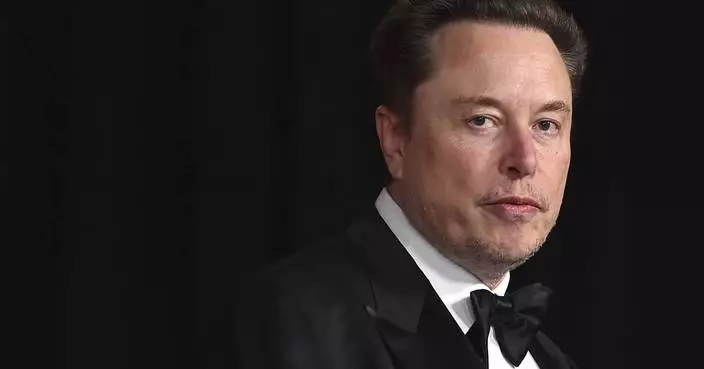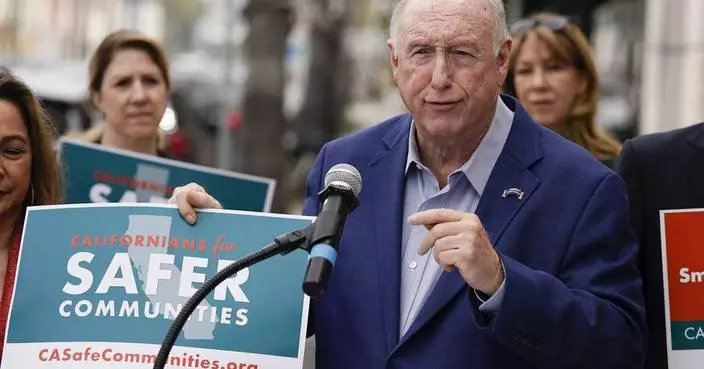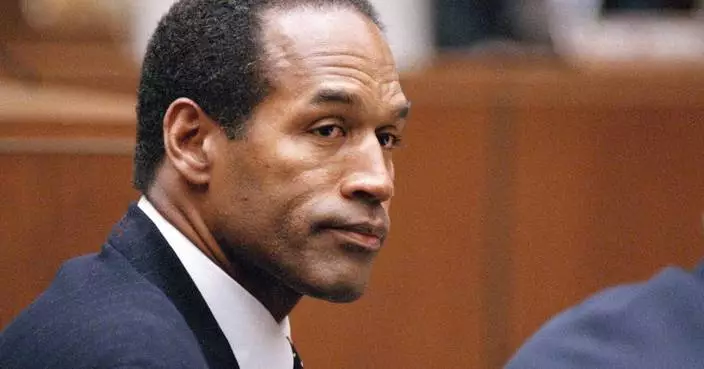A baby humpback whale was found stranded on a beach in Rio de Janerio.
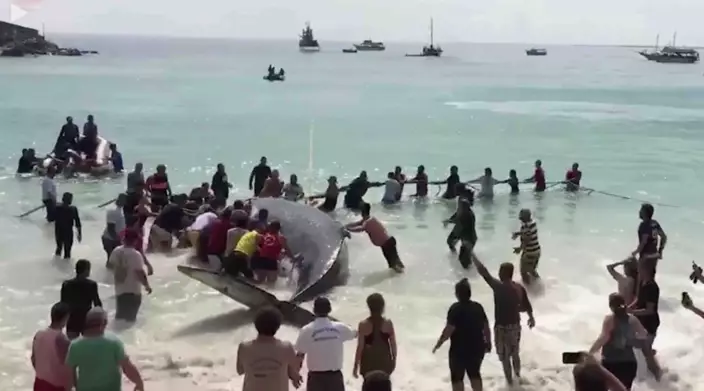
More than 30 beachgoers stepped in to help save the whale. Using ropes and with teamwork, they managed to move the baby whale back into the water.
As the whale slowly swam back out to sea, the crowd erupted in excitement.

DETROIT (AP) — The U.S. government's auto safety agency is investigating whether last year's recall of Tesla's Autopilot driving system did enough to make sure drivers pay attention to the road.
The National Highway Traffic Safety Administration says in documents posted on its website Friday that Tesla has reported additional crashes involving Autopilot since the recall, raising concerns at the agency about the effectiveness of the remedy. The recall involved more than 2 million vehicles, nearly all the vehicles that Tesla had sold at the time.
The agency pushed the company to do the recall after a two-year investigation into Autopilot's driver monitoring system, which measures torque on the steering wheel from a driver's hands. In the probe, the agency was looking at multiple cases in which Teslas on Autopilot ran into emergency vehicles parked on freeways.
The recall fix involves an online software update to increase warnings to drivers. But the agency said in documents that it has found evidence of crashes after the fix, and that Tesla added updates that weren't part of the recall.
“This investigation will consider why these updates were not part of the recall or otherwise determined to remedy a defect that poses an unreasonable safety risk,” the agency wrote.
A message was left early Friday seeking comment from Tesla.
NHTSA said that Tesla reported 20 crashes that apparently happened after the recall remedy was sent out. The agency has required Tesla and other automakers to report crashes involving partially and fully automated driving systems.
The agency said it will evaluate the recall, including the “prominence and scope” of Autopilot’s controls to address misuse, confusion and use in environments that the system is not designed to handle.
It also said that Tesla has stated that owners can decide whether they want to opt in to parts of the recall remedy, and that it allows drivers to reverse parts of it.
Safety advocates have long expressed concern that Autopilot, which can keep a vehicle in its lane and a distance from objects in front of it, was not designed to operate on roads other than limited access highways.
The investigation comes just one week after a Tesla that may have been operating on Autopilot hit and killed a motorcyclist near Seattle, raising questions about whether a recent recall went far enough to ensure Tesla drivers using Autopilot pay attention to the road.
After the April 19 crash in a suburban area about 15 miles (24 kilometers) northeast of the city, the driver of a 2022 Tesla Model S told a Washington State Patrol trooper that he was using Autopilot and looked at his cellphone while the Tesla was moving.
“The next thing he knew there was a bang and the vehicle lurched forward as it accelerated and collided with the motorcycle in front of him,” the trooper wrote in a probable-cause document.
The 56-year-old driver was arrested for investigation of vehicular homicide “based on the admitted inattention to driving, while on Autopilot mode, and the distraction of the cell phone while moving forward, putting trust in the machine to drive for him,” the affidavit said.
The Tesla driver told the trooper that he was driving home from having lunch when the crash occurred at about 3:45 p.m.
The motorcyclist, Jeffrey Nissen, 28, of Stanwood, Washington, was under the car and pronounced dead at the scene, authorities reported.
Authorities said they have not yet independently verified whether Autopilot was in use at the time of the crash.
The Associated Press reported shortly after the recall that experts said it relied on technology that may not work.
Tesla, the leading manufacturer of EVs, reluctantly agreed to the recall last year after NHTSA found that the driver monitoring system was defective and required a fix.
The system sends alerts to drivers if it fails to detect torque from hands on the steering wheel, a system that experts describe as ineffective. Although many newer Teslas have cameras that can watch the driver, they can't see at night, and independent testing shows they can be covered and Autopilot still operates.
Michael Brooks, executive director of the nonprofit Center for Auto Safety, said it appears that NHTSA is looking into where Tesla allows Autopilot to be used.
The company doesn’t limit its use, even though it was designed to operate on limited access freeways. Tesla, he said, appears to rely on computers to decide whether Autopilot can operate rather than maps that show a vehicle’s location.
“When you hit that point where you're in the area where Autopilot wasn't designed to operate and the car knows it's in that area, why is it still allowed to engage?” he asked.
Government documents filed by Tesla in the December recall say the online software change will increase warnings and alerts to drivers to keep their hands on the steering wheel. It also may limit the areas where the most commonly used versions of Autopilot can be used, though that wasn't entirely clear in Tesla’s documents.
NHTSA began its investigation in 2021, after receiving 11 reports that Teslas that were using the partially automated system crashed into parked emergency vehicles. Since 2016, the agency has sent investigators to at least 35 crashes in which Teslas that were suspected of operating on a partially automated driving system hit parked emergency vehicles, motorcyclists or tractor trailers that crossed in the vehicles’ paths, causing a total of 17 deaths.
But research conducted by NHTSA, the National Transportation Safety Board and other investigators show that merely measuring torque on the steering wheel doesn’t ensure that drivers are paying sufficient attention. Experts say night-vision cameras are needed to watch drivers’ eyes to ensure they’re looking at the road.
Tesla offers two partially automated systems, Autopilot and a more sophisticated “Full Self Driving,” but the company says neither can drive themselves despite their names.
CEO Elon Musk for several years has said “Full Self Driving” will allow a fleet of robotaxis to generate income for the company and owners, making use of the electric vehicles when they would have been parked. Musk has been touting self-driving vehicles as a growth catalyst for Tesla since “Full Self Driving” hardware for it went on sale late in 2015.
In 2019, Musk promised a fleet of autonomous robotaxis by 2020 that would make Teslas appreciate in value. Instead, they’ve declined with price cuts, as the autonomous robotaxis have been delayed year after year while being tested by owners as the company gathers road data for its computers.
Neither Musk nor other Tesla executives on Tuesday’s earnings conference call would specify when they expect Tesla vehicles to drive themselves as well as humans do. Instead, Musk touted the latest version of “Full Self Driving” and said that “it’s only a matter of time before we exceed the reliability of humans, and not much time at that.”
Musk went on to insist that “if somebody doesn’t believe that Tesla is going to solve autonomy, I think they should not be an investor in the company.”
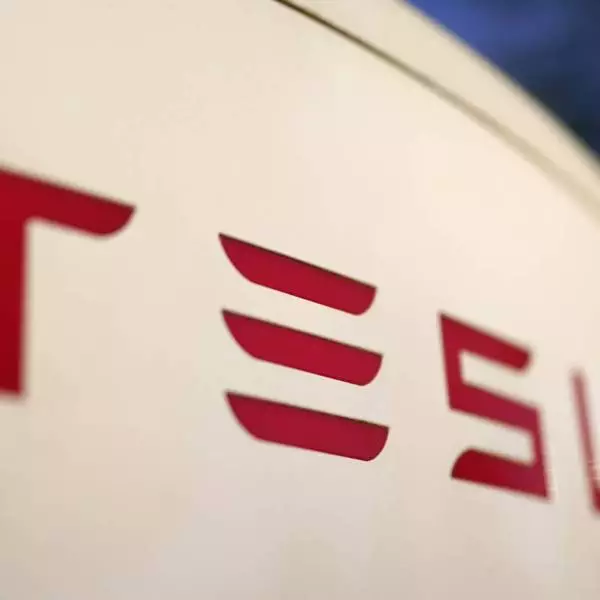
US probes whether recall of Tesla Autopilot driving system did enough to make sure drivers attention
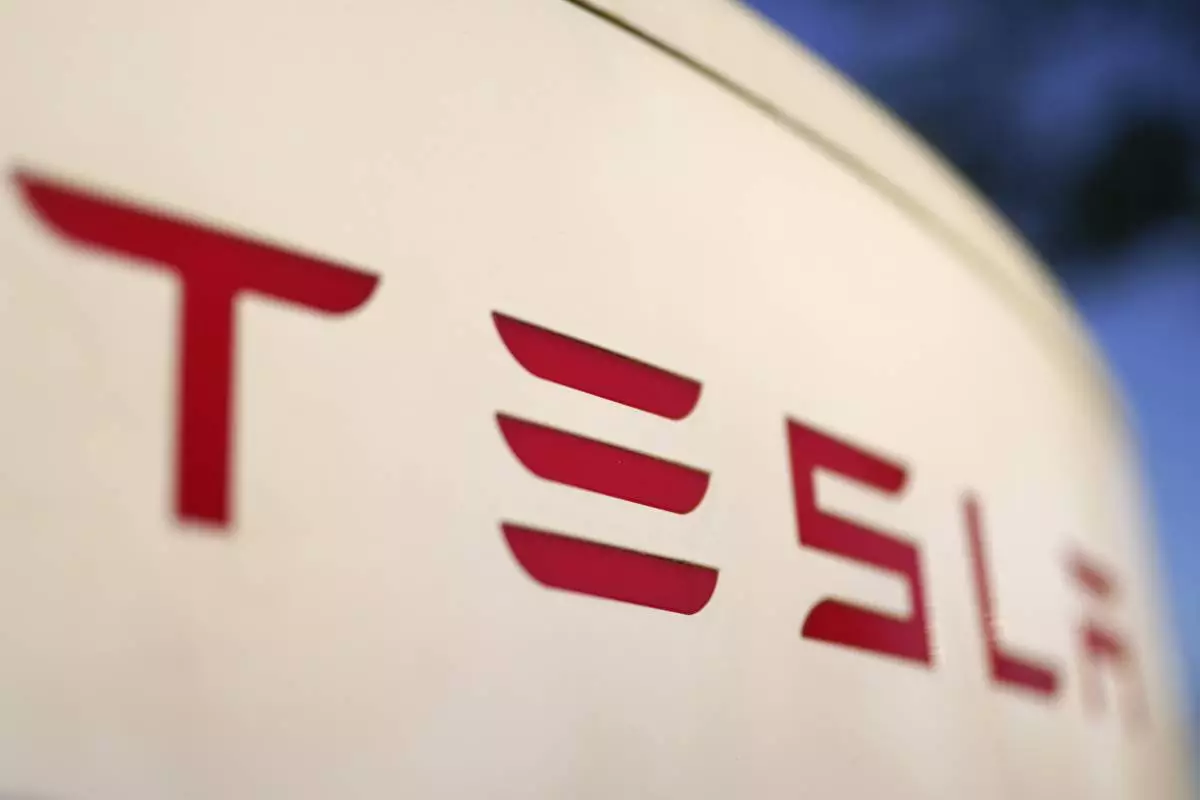
FILE - The logo for the Tesla Supercharger station is seen in Buford, Ga, April 22, 2021. Faced with falling global sales and a tumbling stock price, Tesla has slashed prices again on some of its electric vehicles and its “Full Self Driving” system. Tesla releases first-quarter earnings Tuesday, April 23, 2024. (AP Photo/Chris Carlson, File)
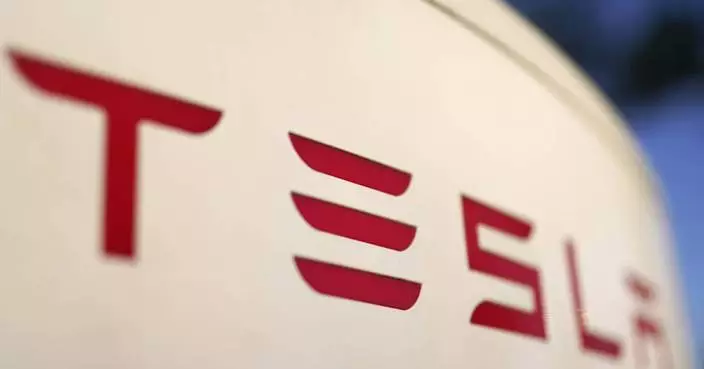
US probes whether recall of Tesla Autopilot driving system did enough to make sure drivers attention








